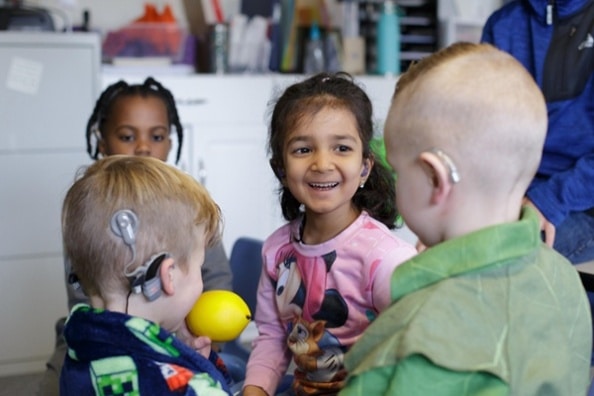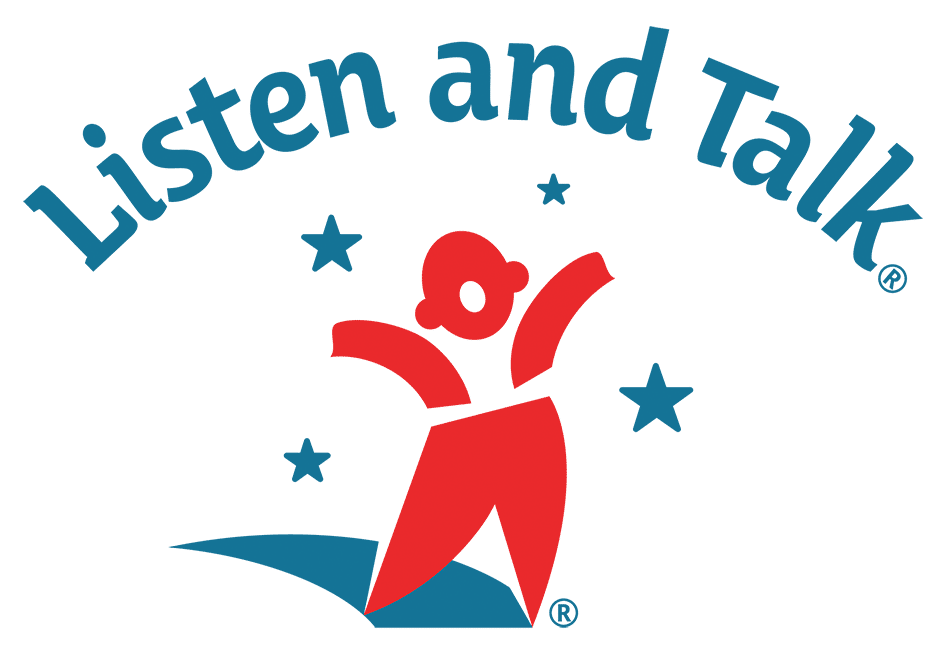
Hearing Fatigue In Children With Hearing Loss
“ Ha y Be er eech an a in mon !”
Let me say it again after I finish chewing:
“Happy Better Speech and Hearing Month!”
Did you understand what I said at the beginning? How long did it take you to figure it out? For those of you who like solving puzzles, did you enjoy the exercise? But what if you have to figure out sentences like that all the time, all day along; wouldn’t that be exhausting?
Children with hearing loss are constantly required to fill in the blanks to figure out what is being said. While amplification technology has come a long way in providing better access to speech sounds, individuals with hearing loss still face challenges in fully perceiving speech. This is particularly true in difficult listening conditions, such as in a restaurant, gym, or anywhere there is a high level of background noise and/or reverberation.
On April 19th, many of the professionals at Listen and Talk attended a presentation by Dr. Karen Anderson, a heralded Listening and Spoken Language expert, and the Director of Supporting Success for Children with Hearing Loss. She talked about how listening in noise is like reading black fonts on a dark gray background. As the shade of gray becomes darker, it gets harder to make out the letters. Similarly, Dr. Anderson demonstrated that reverberation is like smeared, overlapping letters that make it difficult to tell the words apart. During the exercise, we were asked to decipher a message on the screen. With the dark background masking the letters, and the overlapping letters smushing the words together; it took a lot of extra concentration and energy to make out the message! This is similar to the challenges our children with hearing loss are faced with daily. Just like trying to read the words that are smudged or lost in the background, children with hearing loss need to expend extra energy in making sense of what was said to them. Understanding verbal communication is a natural process for those without hearing loss, but for people with hearing loss it is like a mental workout everyday. No wonder they may feel so tired at the end of the day!
Fatigue is known to be associated with moodiness, reduced ability to focus, slower processing time and impaired judgement. Here are 5 tips to help lessen the impact of listening fatigue on children with hearing loss:
- Use well-fit amplification technology (hearing aids, cochlear implants) consistently
- Use remote microphones/digital modulation systems in difficult listening situations – These systems reduce the effects of background noise, poor acoustics and distance by delivering the speaker’s voice right into their ears through their amplification technology
- Reduce background noise and reverberation – Improve their listening condition by turning off the TV and radio and finding a quieter place to talk and play. Also reduce the hard surface that causes reverberation by putting a rug on the floor and curtains on the windows.
- Face them when you talk – Facial cues help fill in the missing pieces of information. Facing them under good lighting helps them to see the facial cues.
- Take periodic listening breaks from noise – When they are around a high level of background noise, like a birthday party, find a quiet corner and have them look at a book for 10 minutes to take a rest from the bombardment of sound.


